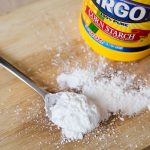
Contents
- 1 Dry Socket
- 1.0.1 Causes of Dry Socket
- 1.0.2 Risk Factors for Dry Socket
- 1.0.3 Symptoms of Dry Socket
- 1.0.4 Diagnosis of Dry Socket
- 1.0.5 Treatment for Dry Socket
- 1.0.6 Home Remedies for Dry Socket
- 1.0.7 Prognosis and Healing of Dry Socket
- 1.0.8 Does Dry Socket Heal on Its Own?
- 1.0.9 Complications of Dry Socket
- 1.0.10 Preventing Dry Socket
Dry Socket
A dry socket is inflammation of the jawbone (or alveolar bone) after tooth extraction. It is also called "alveolar osteitis" and is a complication that can occur from a tooth extraction.
- A dry socket is relatively rare, occurring in around 2% of tooth extractions.
- However, the occurrence rises to at least 20% when it involves the removal of lower wisdom teeth.
The typical scenario for a dry socket is throbbing pain two to four days after a tooth is pulled. Dry socket pain is often accompanied by bad breath and a foul taste in the mouth, indicating interrupted healing.
Causes of Dry Socket
A dry socket is caused by the partial or total loss of a blood clot in the tooth socket after tooth extraction. Normally, a blood clot forms as the first step in healing to cover and protect the underlying jawbone. If the blood clot is lost or does not form, the bone is exposed, and healing is delayed.
In general, dry socket may result from bacterial, chemical, mechanical, and physiologic factors:
- Bacterial: Preexisting infection like periodontal disease can prevent proper clot formation. Certain oral bacteria can break down the clot.
- Chemical: Nicotine from smoking decreases blood supply, hindering clot formation.
- Mechanical: Actions like sucking through a straw, aggressive rinsing, spitting, or dragging on a cigarette or vape pen dislodge the blood clot.
- Physiologic: Factors like hormones, dense jawbone, or poor blood supply prevent clot formation.
Risk Factors for Dry Socket
Risk factors for developing a dry socket include smoking, impacted wisdom tooth, being female, and being above age 30.
Smoking is a risk factor due to nicotine reducing blood supply, preventing clot formation. Chewing tobacco increases the risk of infection.
Extraction of impacted wisdom teeth can cause trauma and increase the chances of a dry socket.
Previous infections like periodontal disease or pericoronitis can predispose an individual to a dry socket.
Women develop a dry socket more often than men, possibly due to hormonal factors.
Patients over 30 years of age with impacted wisdom teeth have an increased risk of dry sockets due to age-related factors.
Symptoms of Dry Socket
A dry socket is characterized by a partial or total loss of a blood clot in the socket. The exposed jawbone may appear gray due to poor healing.
Early signs and symptoms of a dry socket include:
- Throbbing steady pain a few days after tooth extraction.
- Pain radiating to other parts of the head on the same side.
- Bad breath and bad taste due to the accumulation of debris and bacteria in the socket.
Diagnosis of Dry Socket
Diagnosis is based on dental treatment history, clinical examination, and symptoms. Increasing pain indicates delayed healing and a possible dry socket.
- Symptoms of a dry socket typically develop two to four days after tooth extraction.
- Most dry sockets occur within the first week after tooth extraction.
Treatment for Dry Socket
Treatment involves symptomatic support while the socket heals.
- Clearing the socket of food debris through gentle irrigation.
- Applying an analgesic medicated dressing or packing to cover the exposed bone, providing immediate relief. This dressing may need replacement every few days during healing and is often coated with "dry socket paste" containing pain-relieving ingredients like eugenol.
- Prescribing medications like NSAIDs or narcotics to manage pain.
Home Remedies for Dry Socket
Home treatment usually involves temporary pain management until seeing a dental professional.
Relief methods include:
- Using over-the-counter pain medications.
- Applying cold compress or ice pack on the affected side of the face.
- Rinsing with salt water to remove debris.
- Using clove oil by applying it to the affected area with a clean cotton swab.
These methods provide temporary relief, but a follow-up visit with the dentist is important for proper treatment.
Prognosis and Healing of Dry Socket
The prognosis is good, with no long-term consequences. Healing occurs once tissue covers the bone.
Does Dry Socket Heal on Its Own?
Dry socket healing takes around 7 to 10 days for new tissue to cover the exposed socket.
Complications of Dry Socket
Dry sockets are painful and can cause delayed healing or infection if left untreated.
Preventing Dry Socket
Preventive methods performed by the dentist or surgeon can reduce the risk of dry socket. These methods include:
- Using packing with or without antibiotics during surgery.
- Using sutures to protect the blood clot.
After extraction, avoid smoking, drinking with a straw, and vigorous spitting or rinsing. Follow a soft food diet and keep the area clean with gentle rinsing using an antibacterial solution. It is recommended to schedule tooth extractions during the menstrual period to eliminate the risk of a dry socket due to hormonal changes.
Sources:
Congiusta, M. A. and A. Veitz-Keenan. "Study confirms certain risk factors for development of alveolar osteitis." Evidence-Based Dentistry 14.3 (2013): 86.
Daly, B., et al. "Local interventions for the management of alveolar osteitis (dry socket)." The Cochrane Database of Systematic Reviews 12.12 (2012).
Eshghpour, M., et al. "Effect of menstrual cycle on frequency of alveolar osteitis in women undergoing surgical removal of mandibular third molar: a single-blind randomized clinical trial." Journal of Oral and Maxillofacial Surgery 71.9 (2013): 1484-1489.
Hita-Iglesias, P., et al. "Effectiveness of chlorhexidine gel versus chlorhexidine rinse in reducing alveolar osteitis in mandibular third molar surgery." Journal of Oral and Maxillofacial Surgery 66.3 (2008): 441-445.
Peterson, L., et al. Contemporary Oral and Maxillofacial Surgery, 2nd ed. St. Louis: Mosby, 1993.
Austin Oral Surgery: "Avoiding Dry Sockets After Wisdom Teeth Removal."
Canadian Dental Association: "How Do I Manage a Patient with Dry Socket?"
International Journal of Dentistry: "Dry Socket: Incidence, Clinical Features, and Predisposing Factors."
Merck Manual: "Osteomyelitis."
Merck Manual: "Postextraction Problems."
Journal of the South African Dental Association: "Incidence and predisposing factor for dry socket following extraction of permanent teeth at a regional hospital in Kwa-Zulu Natal."


